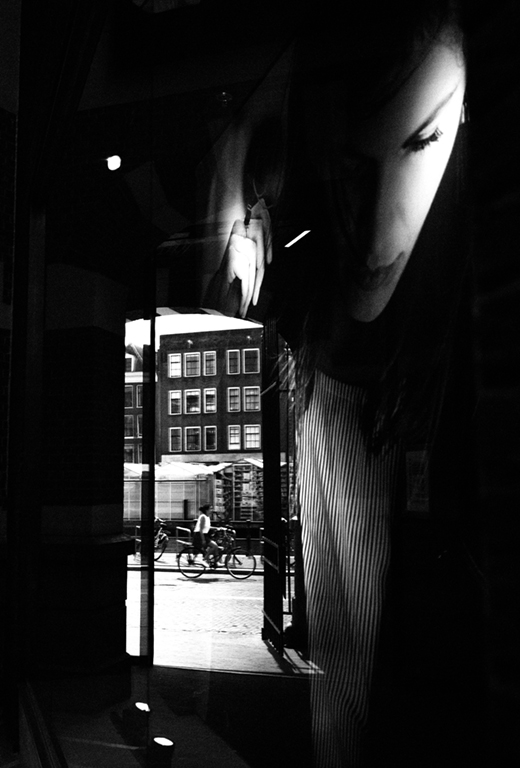
 LUMIX Picture-making Philosophy
LUMIX Picture-making Philosophy
@Ruriko Taguchi
3. Photo Style, A strong ally for showcasing unedited images
All creators have their own methods to create works. Many of them shoot in RAW and then take their time to correct and finish their photos, while others make all the decisions on site and rely solely on JPEG shooting. This appears to be the tendency for those who seem to already have the finished image in their minds before taking the picture.
We try to provide color reproducibility that pictures taken in RAW can easily reflect the photographer's expressive intent when color grading, but even with JPEG images, we are committed to picture-making so that they can capture highly finished works.
The “Photo Style” feature equipped in the LUMIX includes a variety of modes, such as “Monochrome” and “Cinelike,” to suit different subjects and ways of expression, and each parameter of each mode has been developed with painstaking attention to detail. Furthermore, you can adjust parameters such as saturation and hue to your personal preference. In this chapter, we will introduce some of these particular details.
A monochrome world interwoven with light and shadows
Monochrome is a world expressed only in lightness and darkness from white to black, so we are very particular about gradation expression. “L.Monochrome” is not simply a mode without color but has a distinctive tonal gradation that creates a profound and calm atmosphere and has been well received by creators who shoot in monochrome.
Then we added “L.Monochrome D,” a further variation that emphasizes highlights and shadows while retaining exquisite detail. The development process began in response to photographers' desire to capture the magnificence of nature and the textures of the sea, mountains, sky, and clouds in powerful monochrome images.
Rather than simply increasing contrast to make the images more dynamic, we researched black-and-white films from the past and photo collections of famous black-and-white photographers, analyzed the various tones, and studied how we could reproduce them with the LUMIX.

©Daimon Xanthopoulos
This mode is also a function that we developed together with the creators by accompanying them to their shooting sites, which is a part of our picture-making process. On one occasion, we accompanied a photographer to a location in a truly monochrome world, where the landscape was snow-covered as far as the eye could see. He determined whether the intended texture, hardness, three-dimensionality, coldness, etc. were expressed on site, and we tailored the images. That was an extremely valuable experience for us as image quality designers.

Infatuation with monochrome granularity
Silver halide cameras still have a fascinating appeal that continues to captivate people to this day. In particular, many people have also been fascinated by the distinctive graininess of film. Nowadays, image processing software can easily add a grainy effect, but a homogeneous, digital-like grainy effect will not be able to reproduce the texture of a real film photograph.
We were insistent on an analog-like, natural graininess, and thoroughly analyzed the standard black-and-white film to create a film-like feel that is random in grain size, with the grain appearing in different ways on each shot. The development of the grain alone took a considerable amount of manpower and time, and it involved scanning and analyzing actual film images, dropping them down to image quality setting values, creating sample images, and repeating discussions among the picture-making members.
Finally, “Grain” was included in the “Photo Style” image quality adjustment, and we made it possible to adjust intensity to OFF/LOW/STD/HIGH according to the user’s personal preference.

We were also particular about the color granularity!
Having mastered the analysis of monochrome film, we decided to try color film next and developed the “L. Classic Neo.” The approach was the same as for black-and-white film, and we analyzed photos and photo collections taken with color negative film and incorporated them into the image quality design.
After closely analyzing the color film as well, color grain was found to be random. We decided that this should also be reproduced as well, so we added a “Grain Effect” to the image quality adjustment allowing the amount of color noise to be adjusted to OFF/LOW/STD/HIGH as desired. Normally, color noise is an element that should be eliminated by NR, but we dared to pursue reality as much as possible.

The colors are intended to have a nostalgic and gentle color film look. Skin and blue tones are lighter, and black tones are softer without becoming too dark and hard compared to “Standard” in Photo Style.
We also had the help of creators who love to use film cameras, and we repeatedly made improvements based on their feedback from test shots. Finally, we received an endorsement that they could create unique, nostalgic works of art.
The cornerstones of our picture-making philosophy are steady improvements in response to creators’ opinions and requests, and a strong commitment to image quality down to the smallest detail. We will continue to move forward with a consistent philosophy, staying close to our creators and aiming to realize picture-making that responds to their insatiable desire to create.





